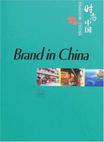品牌中国
2007-7
五洲传播
王逸凡
145
At a time of global economic integration, brands have become the strategic resource of a country or a region and are growing to be a symbol of its strength. The more famous brands a country has, the more competitive the country is. Statistics indicate that world-class brands account for tess than 3 percent of the worlds total brands, but their products account for more than 40 percent of the global market, and their sales volume has reached about 50 percent. In certain industries, the sales volume exceeds 90 percent. In developed countries, 60 percent of the GDP (gross domestic product) comes from industries with brands. This demonstrates that modern economic competition has shifted from an era of product competition to one of brand competition. Since its opening to the outside world, Chinas economy has maintained a rapid growth. According to the revised statistics from the National Bureau of Statistics of China in July 2007, Chinas GDP reached 21,087.1 billion yuan (about $2,800 billion, $1=7.55 yuan), up 11.1 percent from that of 2005. Per capita GDP in the year exceeded $2,000. The living standards of urban and rural residents improved considerably as their awareness of brands strengthened and brand-product consumption and exports continued to grow. A group of Chinese brands such as Haier, Huawei, Lenovo and TCL, which have basically established an international presence, are growing rapidly. We have entered the era of the brand economy. The impetus of forming a brand comes from the development of the industry. The growth of brands has deeply reflected the progress of the industry. Statistics indicate the average brand value of the top 20 brands in China has grown from 4.799 billion yuan in 1995 to 43.87 billion yuan in 2006, an increase of 8.14 times. With the new era in China, various brand activities occur one after another. On April 30, 2005, the Business Channel of China Central Television (CCTV) hosted the "China Brand Summit Forum". At the forum, 103 Chinese companies at the forefront of Chinas healthy and rapid economic development jointly issued the Chine Brand Declaration, saying that Chinese enterprises "must complete their upgrading in brands, products, services and talents as early as possible and establish more Chinese brands as global brands while keeping their traditional advantage in order to gain a higher development platform and greater growth space in the future." The declaration demonstrates that "brand" has become a keyword in Chinas economic development.
Brand and LifeBrand Awareness of the Chinese People and the Growth of China's BrandsThe Charm of BrandsLiving in the Era of BrandsBrand Fans and NONO GroupChinese Time-honored Name: the Origin of Brands of in ChinaDashila - a Miniature of Chinese Time-honored BrandsThe Crisis of Time-honored StoresNew Faces of Time-honored BrandsInternational Brands:Pacesetter to Modern Life1979-1991: The Dawn of a Modern Brand-based Life1992-2000: Modem Brand Awareness Taking RootsFrom 2001: Brand Name Products into Ordinary FamiliesThe Finality of "Foreign Brand Worship"Chinese Brands,Part of the Daily Life of the Chinese People Food Consumption and Brands Modem Housing and Brands Culture, Education and Brands Tourism, Leisure and Brands
插图
At a time of global economic integration, brands have become the strategic resource of a country or a region and are growing to be a symbol of its strength. The more famous brands a country has, the more competitive the country is. Statistics indicate that world-class brands account for tess than 3 percent of the world's total brands, but their products account for more than 40 percent of the global market, and their sales volume has reached about 50 percent. In certain industries, the sales volume exceeds 90 percent. In developed countries, 60 percent of the GDP (gross domestic product) comes from industries with brands. This demonstrates that modern economic competition has shifted from an era of product competition to one of brand competition.Since its opening to the outside world, China's economy has maintained a rapid growth. According to the revised statistics from the National Bureau of Statistics of China in July 2007, China's GDP reached 21,087.1 billion yuan (about $2,800 billion, $1=7.55 yuan), up 11.1 percent from that of 2005. Per capita GDP in the year exceeded $2,000. The living standards of urban and rural residents improved considerably as their awareness of brands strengthened and brand-product consumption and exports continued to grow. A group of Chinese brands such as Haier, Huawei, Lenovo and TCL, which have basically established an international presence, are growing rapidly.We have entered the era of the brand economy. The impetus of forming a brand comes from the development of the industry. The growth of brands has deeply reflected the progress of the industry. Statistics indicate the average brand value of the top 20 brands in China has grown from 4.799 billion yuan in 1995 to 43.87 billion yuan in 2006, an increase of 8.14 times.With the new era in China, various brand activities occur one after another. On April 30, 2005, the Business Channel of China Central Television (CCTV) hosted the "China Brand Summit Forum". At the forum, 103 Chinese companies at the forefront of China's healthy and rapid economic development jointly issued the Chine Brand Declaration, saying that Chinese enterprises "must complete their upgrading in brands, products, services and talents as early as possible and establish more Chinese brands as global brands while keeping their traditional advantage in order to gain a higher development platform and greater growth space in the future." The declaration demonstrates that "brand" has become a keyword in China's economic development.
